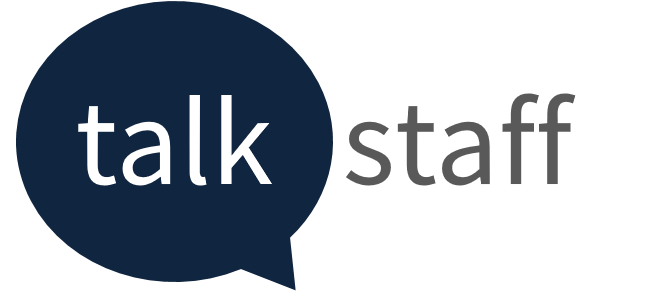
6 Top Ways that Employee Relations can Result in Workplace Conflict
A Must-Read Guide for Managers, Department Heads and HR Teams
Employee relations and conflicts are inevitable in any workplace, but when these aren’t managed effectively this can have detrimental effects on productivity and employee turnover. Understanding these common issues, particularly as HR professionals can help you create a healthier work environment and a positive workplace culture, utilising strong HR policies and perhaps even elements of behavioural change, such as social copying in the workplace.
A staggering 22% of large UK organisations are failing to meet key employee relations objectives, on a survey carried out on HR professionals and C-suite participants.
In this guide, we’ll delve into the top reasons that employee relations create conflict, offering insights, statistics and solutions to help you navigate these challenges effectively.
This is a deep dive blog so here’s an index to help you out:
- Communication Breakdowns
- Unclear Job Roles and Responsibilities
- Workload Imbalances
- Diversity and Inclusion Issues
- Personality Clashes and Cognitive Diversity
- Management Styles
- The role of HR in employee relations
- The first step towards thriving employee relations
Reach out for support with managing difficult conversations
Communication Breakdowns
Workplace communication statistics show that 86% of employees and executives cite the lack of effective communication and collaboration as the main causes of workplace failures. What’s more teams who communicate effectively can increase their productivity by up to 25%.
Many sources of conflict in employee relations come down to miscommunication. When employees don’t communicate effectively, misunderstandings can arise, leading to frustration and disputes.
Here’s some scenarios and their examples:
Lack of communication
A colleague knows that they will be in late to work due to a GP appointment but knows their manager usually works from home on a Tuesday. They worry about their manager saying no to the request (from prior experience) so they decide to risk it and hope the manager doesn’t notice. A colleague mentions the appointment in passing and this leads to conflict between the manager and the employee.
A lack of clear instructions
A manager wants a project done by the end of June, when they say ‘soon’ the employee assumes they mean by the end of the Summer as the manager has previously used the word ‘soon’ for less urgent projects and been happy with these timelines. The manager recalls saying end of June verbally but the employee remembers them saying soon. Therefore, the project is not done in time leading to board members demanding an explanation.
Clashes in communication styles
When cognitive diversity is present in teams this is great for driving innovation, however, when teams aren’t taught how to work well together with others this can cause problems. More on this later in the ‘personality clashes’ section.
Miscommunication
A colleague rings the company to explain they have a childcare emergency, the person who takes the call makes a note that they are coming in later due to the school run. When the colleague turns up at 11am this appears to be an outrageous flaunting of the flexible working rules which allows for school runs but expects core hours of 10am-3pm. Colleague tries to explain that their child had a medical emergency, but the manager is too angry to listen.
Incomplete communications
Hearing half the story
Person A is trying to impress Person B who has a senior management role. Person B comments in passing, during a 1-2-1 private meeting with Person C (Person A’s direct manager) that they haven’t seen the results they expected from Person A but weren’t surprised due to the challenges of the market right now. Person C merely communicates to Person A that their results are unacceptable, and Person B has commented on it.
Instead of seeing the whole picture Person A assumes they have failed to impress senior management and panics. This results in them questioning their job security and securing another role leading to recruitment challenges and costs and retraining to the business. In fact, Person A had a great plan in place for lead generation but couldn’t focus due to the hit to their wellbeing at work and the heightened effect of imposter syndrome.
Solutions for a breakdown in communication
Here are some solutions to help mitigate communication breakdowns between teammates and managers.
Promote Open Communication – Encourage open dialogue through regular meetings and feedback sessions. Ensure managers develop soft skills such as empathy.
Build Trust – When people don’t trust their managers or teammates they don’t communicate and won’t ask questions when things are unclear.
Relationship Building – Ensure that managers take the time to individually understand their team. If their team is too big then explore organisational design or restructures to flatten the hierarchy, improving 1-2-1 relationships & driving efficiency and productivity.
Team Development – Provide communication skills training to help employees articulate their thoughts clearly.
Use Technology – Implement collaborative tools like Slack or Microsoft Teams to facilitate better communication.
HR Strategy – Work with your HR team or outsourced HR specialists to uncover new ways to communicate as a business.
Develop hiring strategies that take your team to the next level
2. Unclear Job Roles and Responsibilities
More than 25% of employees say that they didn’t receive enough information about their job position before accepting a job offer. Meanwhile just 40% of surveyed employees say that their current job reflects how the job position was initially described during their interview process.
Understanding the Problem:
Ambiguity in job roles can lead to confusion and conflicts among employees. When responsibilities overlap or are not well-defined, it can result in disputes over job duties.
For example, here’s a scenario:
Job Ad doesn’t match job role
Many of us have heard of real-life scenarios where, for example, a Sales Manager on their first day finds out their role is actually titled Sales Executive or where 360 marketing roles turn out to be telesales. Sometimes this is unintentional, other time this is catfishing. Regardless of where this originates this can be deeply damaging to the morale and wellbeing of the new candidate.
The new candidate may well choose to leave the organisation for a better fit. What’s more there is likely to be a skills gap from what the job is supposed to be compared to the person hired. This is often further exacerbated when good HR processes are not in place. For example, not presenting someone with a jobs contract until their start day.
How many people leave their jobs in the first 6 months?
A staggering 31% of 1,000 employees quit their new job in the first six months for different but avoidable reasons.
Solutions for confusion in hiring processes
Clear Job Descriptions
Ensure that every role has a detailed job description outlining responsibilities. Often companies, particularly larger ones copy and post similar job ads leading to people not applying to vague positions landing a role without having true insight into what the role is.
For example, instead of saying ‘must have proven track record in sales’ you might put ‘must have a proven track record in B2B sales to large organisations’ or ‘proven track record in customer service for inbound sales.’ Talent acquisition companies can help you make your job ads stand out.
Tailored Interviews
Interviews can suffer from the same fate as vague job ads when the same questions are asked on repeat such as “where do you see yourself in 5 years” make sure you ask role specific questions such as “explain how you’d handle a customer complaint” or “How do you build trust with customers?”. It’s also wise to avoid yes no questions such as “do you think you could do x?” which don’t give true insights into the candidate’s ability to perform in the role.
Also talk about work preferences and expectations such as mandatory days in the office. Whilst exploring these stay clear of any questions that could be seen as discriminatory in nature, an example of an inappropriate question would be asking a candidate if they plan to have children in the imminent future. Revise your knowledge of the Equality Act before proceeding on a hiring drive.
Ensure anything mandatory such as workdays also makes its way into the job contract to avoid confusion too, so any conflicts of interest can be queried before the start date.
Regular Reviews
Periodically review and update job roles to reflect any changes in the organisation or the person’s skillsets. Invest in the person’s soft and technical skills to ensure they are still fit for the role and have the right level of development. For example, if it is a payroll role they need regular training to stay up to date with payroll legislation, whereas a marketing role needs to keep up with the AI changes in the workplace.
Role Clarity Meetings
Conduct meetings where necessary to clarify roles and address any overlaps or ambiguities.
Implement Hiring Agility
Hiring often ends up being approached with a more short-term focus, But hiring just for now can leave you standing still or falling behind
What’s more building strong teams which align to future organisational objectives is a key driver for business success. So how do you avoid this trap?
Join this free development session on hiring agility on 19th June 2024 or, if you’re reading this after this date then request the takeaways.
We offer outsourced HR support and advice for workplace conflict
3. Workload Imbalances
The average staff turnover rate for UK workers is currently 35% (Jan 2024) with significant variations by industry such as 19% in charities and 8.1% in manufacturing.
Understanding the Problem:
An uneven distribution of work can cause resentment and conflict. When some employees feel overburdened while others have lighter workloads, it can lead to dissatisfaction and disputes.
Scenario example of workload imbalance
Colleague 1 has a case load of 5 in a legal role and colleague 2 also has a case load of 5 which seems fair: However, colleague 2 has 2 complex cases whereas colleague 1 only has relatively simple cases. Colleague 2 gets pressure to live up to colleague 1’s work pace and case completion rate and resents working extra hours when colleague 1 can work regular hours and complete their case load. Colleague 2 faces calls of being inefficient and ends up snapping at Colleague 1 leading to disciplinary proceedings.
In scenarios like this it’s important to look at mitigating circumstances especially when someone’s behaviour at work is out of character.
Solutions for work distribution fairness in the workplace
Fair Distribution
Monitor workloads and distribute tasks evenly. Ensure that it isn’t just quantity of work that’s taken into account but the complexity of that work. Also bear in mind that not everyone will have the exact same set of skills and training which means that it may take one person 2 hours to complete a task and someone else 5 hours. Look at mentoring opportunities to drive efficiency and team development, and watch for signs of favouritism in teams which can further exacerbate the problem.
Consider Cognitive Diversity
For example, 5 members of the team are expected to present their project work during a weekly stand up. 3 members of the team are extroverts who love public speaking and enjoy challenging questions whereas 2 are introverted members of staff who find positive conflict difficult. Consider how to make accommodations for individuals to get the most out of everyone. Read more about cognitive diversity in teams here.
Offer Flexibility and Consider Groups
Offer flexible working hours to help employees manage their workloads better. Some people will perform better first thing in the morning and others may perform better at night. Asynchronous working hours may make sense for this. There are also many ways you can assess a hybrid role on an individual basis too.
Also consider how working hours could create indirect discrimination or disadvantages for key groups: For example, a rule to be in the office by 7.30am could effect to those travelling from further distances who then need to get up at 6am to arrive on time and this effects their cognitive ability disproportionately compared to colleagues who live close by.
Meanwhile a rule to not work past 6pm may sound great for work-life balance but may affect someone who is most productive between 6-9pm.
A rule to be in at 9am seems straightforward but affects families with children whereas a job role that demands everyone works a Saturday a month (in order to keep things fair) may prevent religious employees from participating.
Pay Equality
Don’t forget to consider pay equality in your roles. When hiring new people it’s tempting to offer them higher salaries to tempt them in but this can lead to resentment if new employees receive a higher salary for the same role. Also consider your gender pay gap, you can also consider your diversity pay gap too. Your payroll team or outsourced payroll services partner can play a big role through pay data and employee benefits.
Feedback Mechanism
Implement a system where employees can express concerns about their workload. Bear in mind that this can change over time due to people leaving an organisation, market pressures or extra responsibilities such as being promoted to a people manager.
Develop your leaders and teams through organisational development
4. Diversity and Inclusion Issues
When a company doesn’t create a culture that promotes diversity and inclusion this can lead to conflicts stemming from misunderstandings or biases. Employees from diverse backgrounds may feel excluded or undervalued.
Scenario 1:
Person A is granted accommodations to take breaks at set times for religious reasons. This is not openly communicated to the team and other teammates start to resent Person A’s frequent breaks. They start hosting meetings at times when Person A cannot join leading to discrimination.
Scenario 2:
A recruitment drive creates demographic diversity in a fast-growing start-up. The start-up has previously only hired from one nationality as recruitment drives were more localised. As a result, tension rises between teammates due to a clash of cultures which is never addressed. When an employee is later made redundant, after 2 years, due to poor performance they raise an employee tribunal claim and cites race discrimination.
Solutions for diversity and inclusion issues in employee relations
Diversity Training
Conduct regular diversity and inclusion training sessions. Ensure these are not tokenistic in nature. Look at topics such as unconscious bias and ensure that the senior team are bought in on any DEIB (Diversity, Equity, Inclusion, and Belonging) programmes.
Behavioural change
Social copying is important for behavioural change. People will follow the example of other members of their team, for example if you want to create a culture which is inclusive you first need to build those behaviours.
Inclusive HR Policies
Develop HR policies that promote inclusivity and respect for all employees. This prevents employees from later claiming that the expected behaviour wasn’t clear.
Employee Resource Groups
Encourage the formation of groups that support diverse communities within the workplace and give everyone a voice.
Explore Psychometric Testing here and download a free cognitive styles psychometric example
5. Personality Clashes and Cognitive Diversity
Poor mental health costs UK employers £56 billion annually, emphasising the importance of mental health support.
Understanding the Problem:
Personality differences can lead to conflicts, especially in a diverse workplace. When employees with different temperaments work together, it can result in friction.
Scenario:
A manager has a direct approach and believes in constructive criticism. As a new starter has just joined the manager wishes to help them learn the ropes faster by providing regular feedback.
Meanwhile the new starter notices that other members of the team aren’t receiving this regular feedback and criticism and takes it personally, believing this to be a direct attack on them as an individual rather than an attempt to help them learn faster.
Solutions:
Team Building Activities – Organize activities that help employees understand and appreciate each other’s personalities.
Conflict Resolution Training – Provide training on how to handle and resolve personality clashes effectively.
Use RealPlay to practice real conversations – RealPlay is a facilitated approach to understanding and managing the behaviours we encounter in challenging conversations and meetings. It allows us to witness the impact of specific behaviours and how they can transform the outcome of a meeting.
Psychometric testing – Psychometric testing allows for teams to understand each other better and can also be useful during hiring drives too. Learn more here about psychometric testing pros and cons and how to use them to improve team collaboration.
Mediation – In cases of serious disputes, consider mediation by a neutral party to resolve conflicts such as an outsourced HR company.
The most common cause of stress is work-related stress, according to Statistica, with 79% saying they have frequently felt it.
Don’t leave your managers to climb the mountain alone – Use Leadership Development to drive performance and improve wellbeing
6. Management Style Issues
A CIPD survey revealed that 87% of employers describe the relationship between managers and employees as “very good” or “good”. However, over half of employers agree that the UK is entering a more unstable period of employment relations. What’s more many people saw their career accelerated during the pandemic leading to more accidental managers who haven’t had adequate management or leadership development.
Understanding the Problem:
Conflicts often arise from differences in management styles. Employees may feel micromanaged or neglected, leading to dissatisfaction and disputes.
Solutions for conflicts arising from different management styles
Leadership Training and Development
Offer training programs to help managers adopt effective and inclusive leadership styles and learn critical leadership skills.
Employee Feedback
Implement a system where employees can provide feedback on management practices.
Open Door Policy
Encourage managers to maintain an open-door policy to discuss issues and concerns.
Trade union membership in the UK has declined to 6.25 million in 2022, representing 22.3% of employees. Despite this decline, unions remain a significant part of employee relations, particularly in the public sector.
Read more about leadership styles and their role in company culture here.
The role of HR in employee relations
Your HR function should play a pivotal role in promoting and maintaining positive employee relations within your organisation.
HR professionals are responsible for addressing workplace conflicts, ensuring compliance with employment laws, and promoting a healthy, productive work environment through effective communication and fair HR policies.
They act as intermediaries between management and staff, striving to balance the needs and goals of both sides. By implementing robust employee engagement strategies and conflict resolution mechanisms, HR help to build a cohesive and motivated workforce.
However, internal HR departments can sometimes become entangled in organisational politics, potentially compromising their objectivity.
This is where outsourced HR services can be particularly beneficial. External HR companies bring an unbiased perspective and professional detachment, enabling them to handle sensitive issues more impartially and efficiently.
By leveraging outsourced HR, businesses can ensure fairer and more transparent employee relations, ultimately fostering a more harmonious workplace.
Dreaming of a team that wins together? – Get started with our HR, team development and hiring strategies – Reach out for a chat about your challenges
The first step towards thriving employee relations
Remember, a healthy workplace culture starts with effective communication, clear roles, balanced workloads, inclusivity, understanding personalities, and supportive management. As HR professionals, your role in nurturing these elements is pivotal in building a thriving workplace.
Ready to transform your workplace dynamics? Contact our expert team today to discover how our outsourced HR and development services can help you manage employee relations, resolve conflicts, and build a thriving, productive environment.
Let’s create a better workplace together – reach out now!
Want HR, Payroll and Development Insights straight to your inbox?
Last Updated on 8 months by Hannah Ingram












